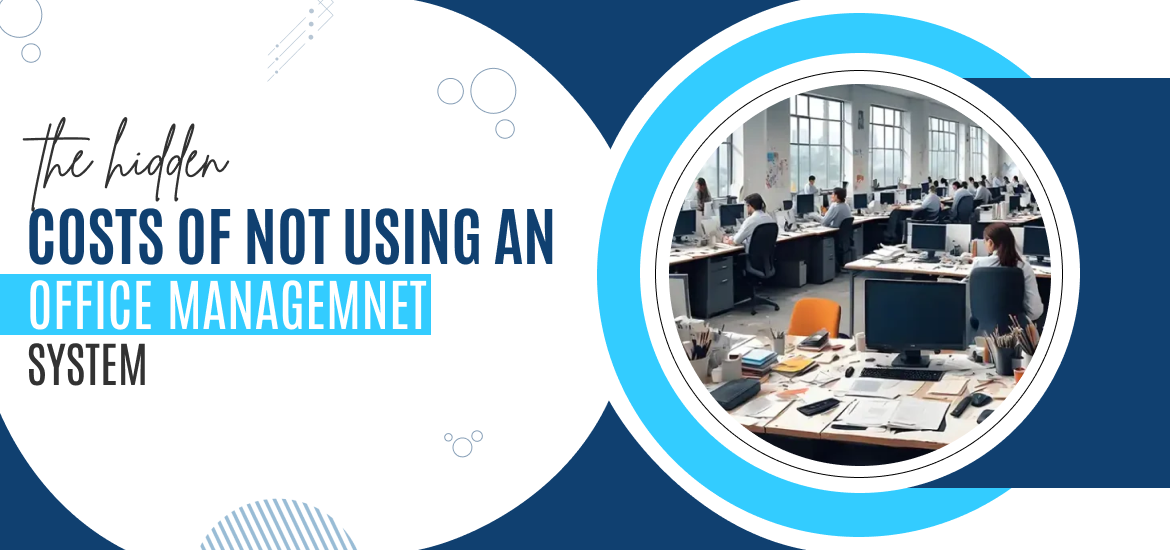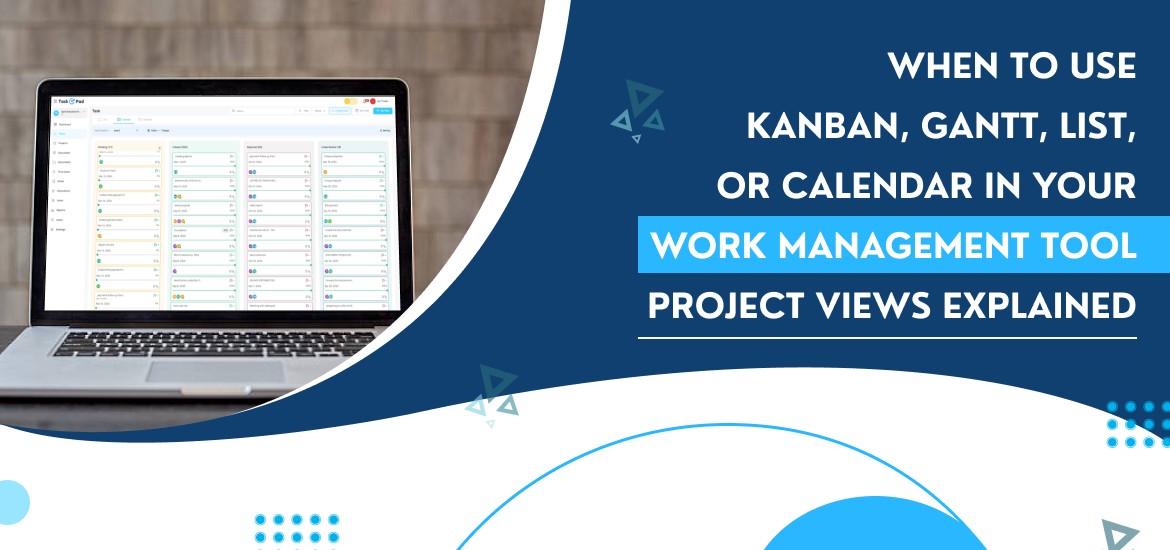
Hybrid Team Management
The Hidden Costs of Not Having Hybrid Work Management Software for Your Business
Aug 28th, 2025
The modern day businesses prefer hybrid work models over conventional office work or complete remote teams. The hybrid work model is a mixture of in-office and remote work. It offers flexibility and saves a good amount of cost for businesses. However, it also introduces a layer of complexity that traditional management approaches struggle to address effectively. Without dedicated hybrid work management software, businesses expose themselves to the hidden costs that can affect productivity, damage culture, and ultimately impact the bottom line.
At first, these costs are hard to see. They show up as small problems like wasted time and unhappy workers. But over time, they add up and become a big issue. Let’s look at the main hidden costs of not having hybrid work management software.
01. Reduced Productivity and Efficiency
Productivity and efficiency slowly goes down. This is a big hidden cost. Without a central hybrid work management software, many problems pop up. You can’t manage schedules well. You also can’t track tasks or resources easily. This impacts both in-office and remote teams.
- Scheduling Conflicts: Scheduling gets very difficult. It’s a huge puzzle. People have trouble finding a good time to meet. This wastes time. Projects get delayed. People get frustrated. For example, you might try to book a meeting room. A remote worker could be using it. They didn’t register their in-office day. This small problem can cause big issues for the whole team.
- Lack of Visibility and Accountability: Visibility and accountability suffer greatly. It’s hard to track progress. Managers can’t easily see who is working on what. They don’t know where their team members are. It’s tough to tell if deadlines will be met. This lack of clear information causes major problems. People might do the same work twice. Tasks get missed. Projects slow down a lot.
- Inefficient Communication and Collaboration: Communication is a major problem. Hybrid teams need to talk easily. They need to work together without issues. Without the right tools, this becomes hard. Important info gets lost in long email chains. Remote workers can miss key updates. Brainstorming sessions become disorganized. This slows down new ideas. It makes decisions take longer. It also creates separate groups. These “silos” divide in-office and remote employees.
- Wasted Time Searching for Information: Searching for information wastes a lot of time. There is no central place for documents. Project details are scattered. Team information is hard to find. Employees have to look through emails. They check shared drives. They hunt on different chat platforms. This “information hunt” hurts productivity. It also slows down entire project timelines.
- Difficulty in Onboarding and Training Remote Employees: Onboarding new remote employees is a struggle. It becomes a difficult process. There are no structured digital workflows. Training materials are not easy to find. This makes things harder. New employees take longer to get up to speed. They might feel less connected to the company.
Also Read – 7 Effective Tips To Track Remote Employee Productivity
02. Diminished Employee Engagement and Increased Turnover
Employee engagement is crucial for productivity and retention. The lack of proper hybrid work management tools can negatively impact engagement in several ways, leading to increased turnover costs:
- Feelings of Isolation and Disconnection: Remote workers often feel alone. They feel disconnected from their colleagues. They also feel disconnected from the company culture. Without special efforts, these feelings grow stronger. They lack virtual social spaces. There are no easy ways to connect informally. Team-building activities are missing. With the absence of virtual space, all of this makes them feel more isolated.
- Inequitable Treatment and Lack of Fairness: Hybrid work can feel unfair. Without clear rules and hybrid work management software tools, problems can arise. Workloads might not be shared equally. Some people might get more opportunities. Recognition for good work might be uneven. Remote employees may feel their in-office coworkers have an unfair advantage. This can cause resentment. It also makes them feel less engaged with their work.
- Communication Overload and Burnout: Too many messages cause burnout. When teams use many different apps to talk, it creates an overload of information. People get tired of trying to keep up. They feel overwhelmed. Juggling all these platforms leads to high stress. This can quickly cause burnout.

- Lack of Clarity on Expectations and Policies: Policies and expectations can be confusing. Without clear rules, people get lost. They don’t know the policies for hybrid work. They can’t easily find information on work hours. Communication protocols are unclear. It’s not obvious when they should be in the office. This lack of clarity creates confusion. It also causes anxiety for employees
- Difficulties in Performance Management and Feedback: It’s hard to manage performance. Giving good feedback is a challenge in a hybrid setting. There are no systems to track what people are doing. It’s difficult to hold regular meetings. Remote employees may feel like no one sees their work. They can feel undervalued.
Losing employees is very costly. It includes money spent on hiring. There are also costs for training new people. Productivity drops when a position is empty. Team morale can also suffer. Spending money on hybrid work software helps employees feel better. It boosts engagement. In the end, it helps the company keep good people.
03. Inefficient Resource Allocation and Underutilized Office Space
Without a clear understanding of who is working where and when, businesses can struggle with efficient resource allocation and may end up with underutilized office space, leading to unnecessary overhead costs:
- Wasted Office Space and Utilities: Empty office space costs money. Employees might not schedule their in-office days. The office can be empty on some days. But the company still pays full rent. They pay for utilities and maintenance too. Hybrid work management software can help. With clearly mentioned details on the software, management can have a clear idea about who all are working from the office on which day. This helps use space better. It might even allow the company to get a smaller office or rent out space.
- Insufficient or Excess Resources: Businesses can have the wrong resources. They don’t know who will be in the office. It’s hard to plan for meeting rooms. Parking spots are a guess. IT support is a mystery. This can cause problems. There might be a shortage of resources. That makes people frustrated. Or there could be too many resources. This costs the company more money.
- Ineffective Technology Spending: Technology spending can also be a waste. Companies might buy too much technology. Or they might not use what they have. They don’t understand their hybrid workforce’s needs. A central software platform can help. It provides data on tech use. This helps businesses spend their money more wisely.
Also Read – It’s Not Remote Work; The Lack of Visibility is Causing the Issue in Your Business Operations
04. Inability to Adapt and Scale Effectively
Businesses that fail to adopt appropriate hybrid work management tools may find themselves struggling to adapt to evolving circumstances and scale their operations effectively:
- Lack of Data-Driven Insights: You lack important insights without data. You can’t see employee attendance patterns. You don’t know how much space is used. There is no data on team collaboration. This makes it hard to make smart decisions. You can’t plan future hybrid work strategies. You can’t optimize how you use resources.

- Inflexibility in Responding to Changing Needs: Businesses become inflexible. Without the right tools, they can’t manage a flexible workforce. They struggle to adapt to new situations. They can’t respond to changing employee needs.
- Challenges in Scaling Hybrid Operations: Scaling becomes a huge challenge. As the company grows, so does the hybrid workforce. Managing schedules becomes more complex. Communication gets harder. Allocating resources is a nightmare. Without dedicated software, this all becomes unsustainable. It’s too difficult to manage.
Investing in hybrid work management software provides businesses with the agility and scalability needed to thrive in the evolving world of work.
Also Read – 10 Common Mistakes To Avoid When Implementing New Project Management System
The Smart Investment for a Hybrid Future
The upfront cost of hybrid work software might seem like an extra expense. But the true cost of not having it is far greater. Things like lower productivity, unhappy employees, and wasted money add up quickly. These hidden costs hurt a company’s success.
Today, hybrid work software isn’t just nice to have. It’s a must-have tool. It gives you the structure and data you need. You can manage your teams better. You can use your resources more wisely. It helps create a great work environment. It also helps your business grow.
By using the right technology, you can make the most of the hybrid model. You can avoid all the hidden costs. Ignoring this crucial investment is a risk no modern business should take.
For a great solution, consider TaskOPad. It is built to handle all the complexities of hybrid work. It helps you manage tasks and teams effortlessly.
Book your free demo for TaskOPad today and see the difference.
Search by posts
Search by posts
Recent posts
11-30-2025
Project Team Management
7 Essential Steps for Running a Successful Project Kickoff Meeting
11-29-2025
Team Communication














